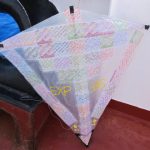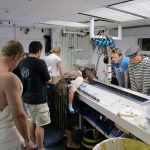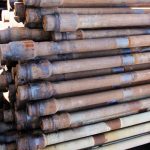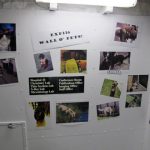
Mid-Atlantic Ridge Microbiology
The top layer of the earth’s crust is full of cracks and fractures. Beneath the ocean, these networked cracks and fractures fill with water that flows through them as the ocean moves and changes. This type of watery network is called an aquifer, and the deep ocean crust contains the largest active aquifer on Earth. Living within this aquifer are all kinds of tiny lifeforms (microbes) that make their homes in this deep ocean landscape. But how many microbes are there? Are there different kinds? Where do they come from? How do they live, eat and move within this deepsea network? These are the questions that scientists onboard IODP Expedition 336: Mid-Atlantic Microbiology hoped to answer. By installing three subseafloor observatories (“CORKs”) into the ocean crust, IODP scientists wanted to gain new information that will help them understand what life is like below the ocean floor.
Here are some resources to help you learn more about the science and mission of our expedition:
- Read this blog post by Katrina Edwards for an introduction to our expedition and an explanation of the fundamental questions we’re trying to answer.
- Watch this animation that describes what a CORK subseafloor observatory is
- Watch this video to learn what an osmosampler is and why we are putting them down below the seafloor, or this one to learn more about CORKs
- Ask a Scientist if you have a question about our research or want to learn more about what it’s like to be a scientist on this expedition
Expedition Videos
- Webisode 2: “Hard Rock Coring” (6:58)
- Livin’ on the JR (3:18) [Also on Vimeo]
- Core Flow Short (2:19)
- Webisode 1: “Ups and Downs” (7:08) [Also on Vimeo]
- Dropping the Re-entry Cone Through the Moon Pool (1:07)
- Safety and Survival Suits (1:14) [Also on Vimeo]
- Tripping Pipe (1:34)
- Getting Ready (2:45)
Deep-Sea Microbes in the News
-
US News (31 August 2011): Exploring the Dark Depths of the Oceans
-
LiveScience (05 May 2011): Mystery Microbes Discovered Beneath Seafloor
-
RSMAS Newsroom (02 May 2011): What Lies Beneath the Seafloor?
-
US News (23 November 2010): Busy Microbial World Discovered in Deepest Ocean Crust Ever Explored
-
New York Times (10 June 10 2008): Meet the Intraterrestrials
-
Women Oceanographers.org: Life in Extreme Environments





































Great post.